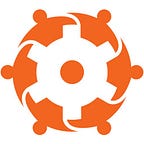Crowdfunding 101: Fixed vs Flexible Funding
If you’re crowdfunding for the first time, you’ll have a major decision on your hands: should I use fixed or flexible crowdfunding? On the surface, the difference between the two are simple, but there are risks and rewards with each choice. Let’s get into what they are.
Fixed Funding
Let’s start with fixed funding, as most people are probably familiar with this model. Fixed funding is when you only receive money you raised if you meet your set goal. If you don’t, all pledged money will be returned to backers and you’ll have to find other ways to raise funds or try again with another crowdfunding campaign.
Popular crowdfunding site, Kickstarter, only allows fixed funding campaigns, while other sites like Indiegogo and GoFundMe allow both fixed and flexible funding. Let’s take a look at what flexible funding allows.
Flexible Funding
While fixed funding only allows you to get money if you meet your goal, flexible funding allows you to keep any money you receive, even if you don’t reach your goal. This also means flexible funding campaigns will have access to money as it comes in instead of having to wait until the campaign is over, allowing companies to begin working immediately with their raised capital.
Why choose fixed funding?
The biggest reason to choose fixed funding is if your project absolutely cannot be completed without a minimum amount of capital. If you’re trying to bring a product to market, you’ll probably want to choose fixed funding unless you’ve raised capital by other means and are simply supplementing funds with a crowdfunding campaign.
The risk of not meeting your crowdfunding goal is also a bit lower if you’re using fixed funding. Campaigns that use fixed funding but don’t meet their goals won’t have to pay any fees on Kickstarter or Indiegogo as the funds are returned to your backers.
Flexible funding campaigns that fail to reach their goals, on the other hand, will have to pay a flat 5% Indiegogo platform fee as well as having to eat payment fees from PayPal and credit cards. This incentivizes companies to set reasonable goals.
Fixed funding also works to minimize risk for your backers. Since backers won’t be charged unless your campaign reaches it goal, there’s less risk of your company not delivering on promises since fixed funding campaigns usually know the exact minimum amount of capital needed to bring a project to life.
Pros:
- Minimizes risks for backers
- No platform fees if you don’t reach your goal
Cons:
- Failed campaigns won’t receive any capital
- You have to wait until a campaign closes to start using raised capital
Why choose flexible funding?
Flexible funding lends itself to personal fundraising, causes, and charities where goals don’t need to be met. This allows charities to set ambitious goals with little risk if they’re not met, as they’ll be able to keep whatever money they do raise.
However, if you’re funding a product with flexible funding, you had better be able to deliver on your promises and campaign perks even if your campaign doesn’t reach its funding goal. Like I mentioned before, companies who are raising capital from a variety of sources may still be able to complete their projects without reaching their crowdfunding funding goal.
Pros:
- Allows you to start working immediately on your product
- Great for charities, causes, and personal fundraising
Cons:
- Failed campaigns will have to eat the platform and payment fees
- You must be able to deliver on your promises with whatever funds you have raised
HAVE MORE QUESTIONS ABOUT CROWDFUNDING? GET IN TOUCH WITH US AND LET’S MAKE YOUR CROWDFUNDING CAMPAIGN THE BEST IT CAN BE.
Learn more about crowdfunding at Crowdtoolz.com.
